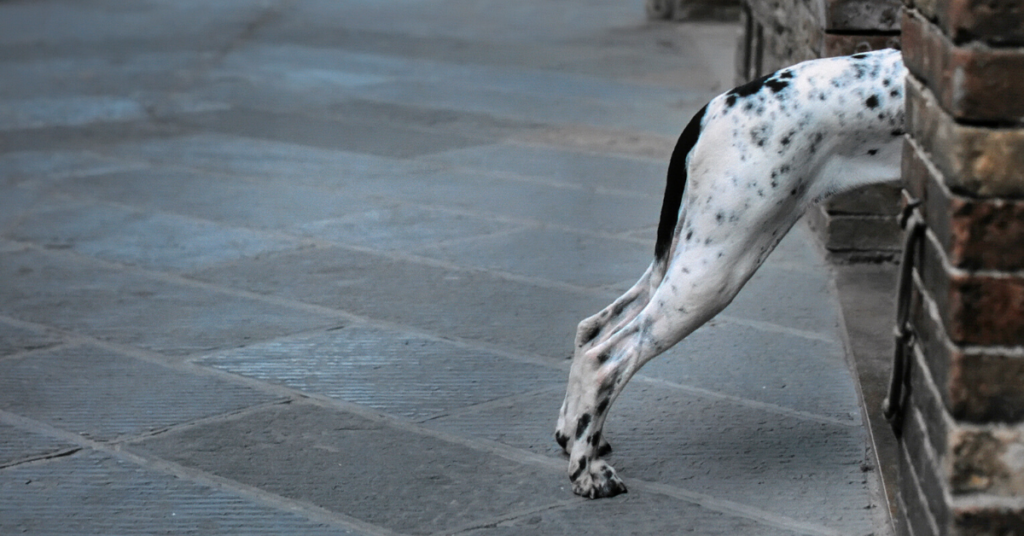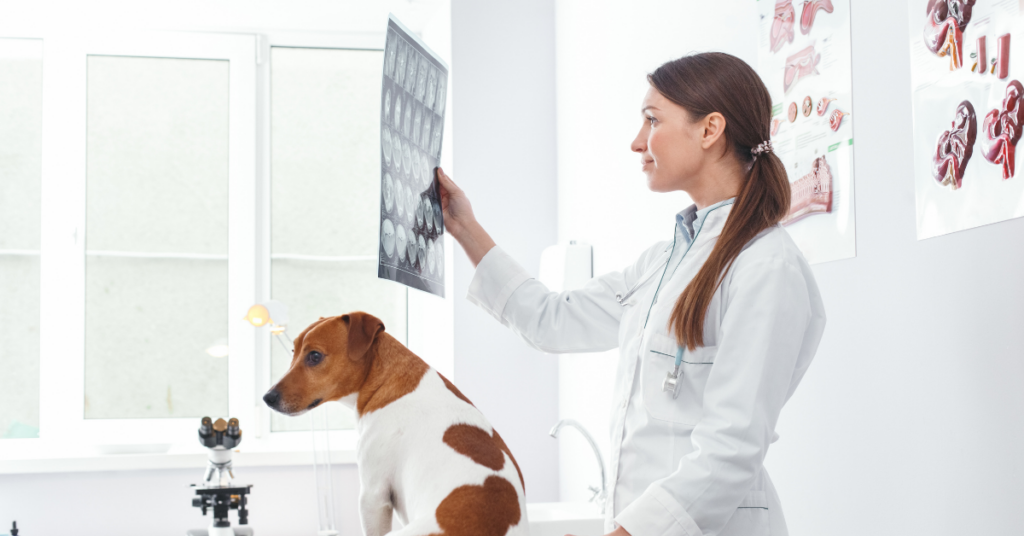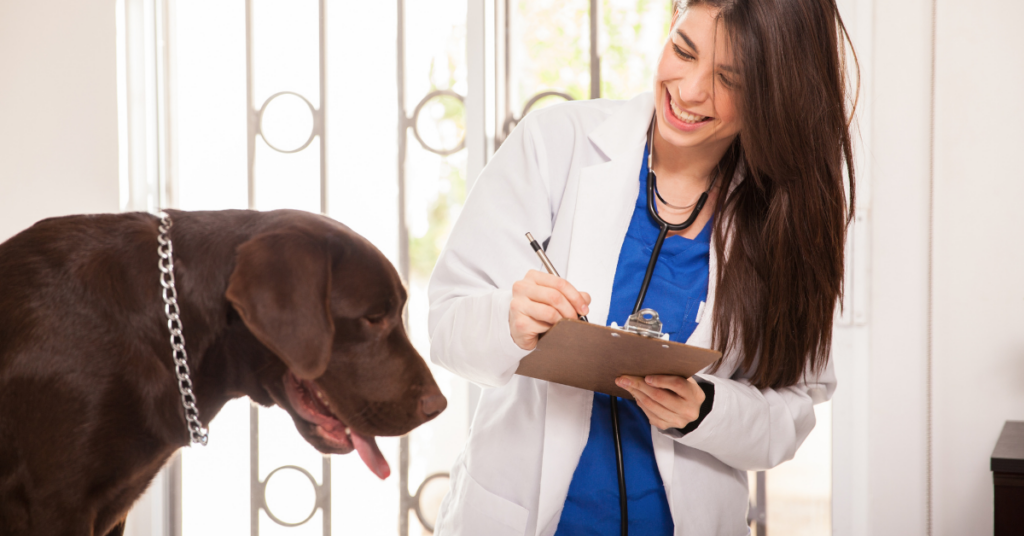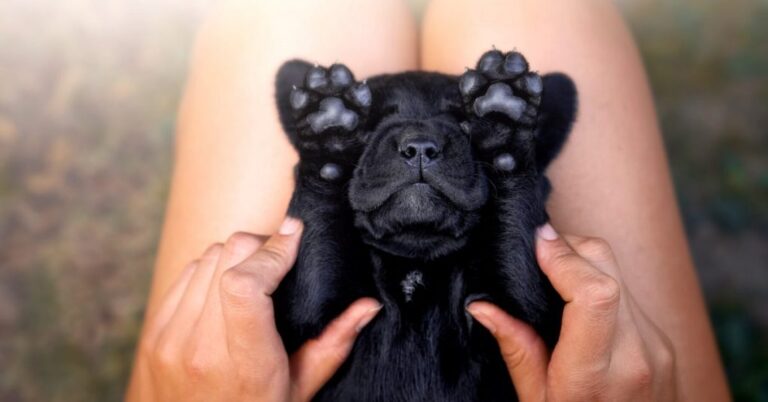Elbow Dysplasia In Dogs (Complete Guide)
Elbow dysplasia in dogs often affects puppies and young dogs while growing.
This painful condition causes one or both elbows to grow abnormally.
There are three main bones in the elbow that can be affected and cause the dog to limp.
Some dogs are affected in one area, and others suffer from a combination.
While elbow dysplasia can be treated, it’s important to be able to recognize it so you can help your dog get the right treatment and reduce pain.
What is Elbow Dysplasia in Dogs?

The term “dysplasia” means abnormal growth of a tissue or organ. Therefore, elbow dysplasia means that there has been abnormal development of the elbow joint.
The elbow joint has three bones (the humerus, radius, and ulna). The dysplasia happens when these bones don’t fit together as they should, which leads to high contact pressure.
As the dog grows, the condition worsens and causes degeneration of the joint, and eventually arthritis. The more degeneration, the more pain it will cause the dog.
In addition, it is commonly seen in large breed dogs, such as german shepherds, labrador retrievers, golden retrievers, and bernese mountain dogs. It’s also more common in dogs than cats.
Symptoms of Elbow Dysplasia

Dogs with elbow dysplasia show common symptoms, such as limping on one or both front legs, it usually worsens after exercise, and elbows are usually stiff, especially after lying down.
They are also lethargic and less excited to go for walks or play. Their front paws may be pointing outwards, also coming down the stairs may look strange, since they have sore elbows.
Additionally, in severe cases, their elbows may be swollen, puffy and painful. The most common age to show symptoms is between six and ten months.
However, some dogs may not show signs until later, when they have advanced arthritis in the elbows.
Causes of Elbow Dysplasia in Dogs

There are three bones in the dog’s elbow (the humerus, radius, and ulna) and there are four skeletal conditions that cause elbow dysplasia to happen in dogs. One or more can be present at the same time:
- Ununited anconeal process happens when the growth plate doesn’t close as it should, which leads to a disjoined piece of bone that causes joint soreness and decay.
- Fragmented coronoid process, where a bone piece breaks off inside the elbow joint, resulting in inflammation of the lining of the joint and the cartilage to degenerate.
- Osteochondrosis dissecans, happens when a piece of cartilage on the bottom of the humerus is disjoined from the surface of the joint, causing pain and inflammation.
- Finally, Medial compartment disease, where abnormal pressure of one joint surface on the other causes the cartilage to wear away.
This results in exposing the underlying bone and the joints become very inflamed and arthritic. Different surgical procedures have been developed to move the forces of weight away from these areas such as sliding humeral osteotomy but it has not been scientifically proven to be beneficial.
Diagnosing Elbow Dysplasia

Diagnosing elbow dysplasia involves having a physical exam, in depth orthopedic exam, and radiographs (X-rays).
X-rays will help to visualize the joint and check for any abnormal developments. Ununited anconeal process (UAP) is usually confirmed on x-rays, but the other conditions cannot always be identified.
If the radiographs are vague, your vet would send them to a board certified veterinary radiologist for interpretation.
CT scans are the most reliable non-surgical test, or in some cases obtaining a sample of the joint fluid by using a needle and syringe. This fluid is then tested for infections that can make things worse.
How to Treat Elbow Dysplasia in Dogs

Treatment plans depend on how severe your dog’s condition is. If the condition is mild, your vet may prescribe anti inflammatory drugs to relieve pain.
Joint supplements and fatty acid supplements may also help to grease the joint and reduce inflammation.
Your vet may also refer you to a certified canine rehabilitation practitioner for more rehabilitative activities, such as swimming, an underwater treadmill. This helps in building up muscles and reduces pressure on your dog’s elbows.
If the dog’s condition is severe, your vet may recommend surgical treatment. The most common surgery option is arthroscopy, which is the use of a fiberoptic scope.
This scope enters the joint area and cleans out any loose pieces of cartilage and/or bone. In rare cases, a surgeon may recommend an open joint surgery.
Finally, to manage symptoms, weight control is important since being overweight will cause more strain on the joints and cause worse symptoms. This is why small animals are less likely to suffer from elbow dysplasia.
In addition, controlled exercise like short walks is a good idea, and preventing your dog from jumping, skidding, racing around and walking for long periods.
Check with your vet to see what type of exercise is best for your dog. Your dog’s diagnosis and treatment will depend on his overall health and the severity of the joint.
When to See a Veterinarian

If you notice any of the signs of elbow dysplasia on your dog, you should contact your vet. You may also want to call your vet if you own a breed at risk of elbow dysplasia.
The vet will help in diagnosing the condition as early as possible and prevent any serious complications.
Also, if you consider buying or breeding a dog, talk to your vet about checking for elbow dysplasia and other inherited diseases.







